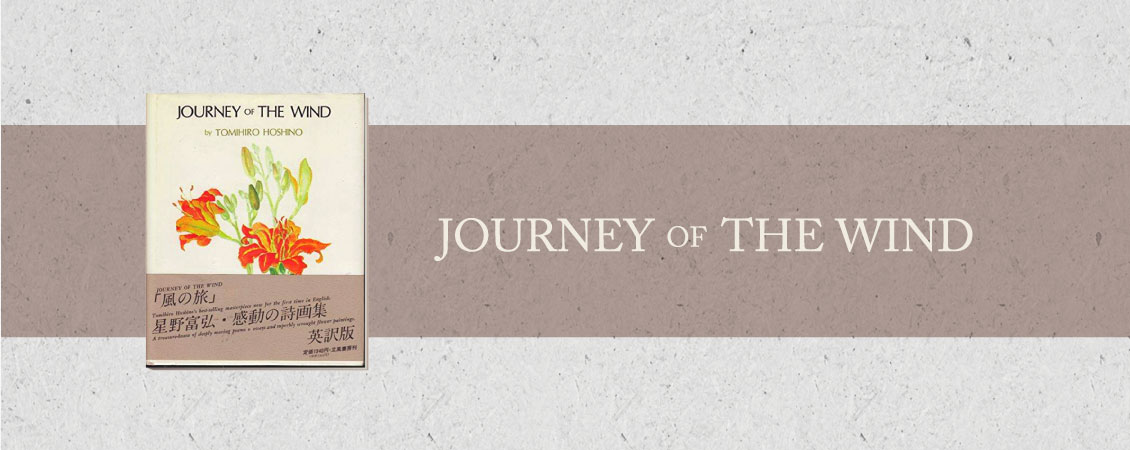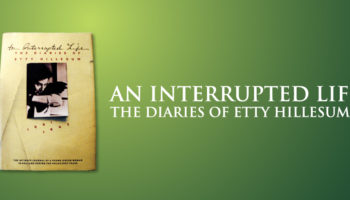An unusual, beautiful book. Each page carries an exquisite colour painting of a flower and a touching verse. The human story behind the book is even more gripping.
Tomihiro Hoshino, the Japanese author, had just started his career as a gymnastics teacher when tragedy struck. He suffered a fall, which left him totally paralyzed from the neck down. He became deeply depressed, and lost interest in everything.
Then came nine years of treatment and extreme suffering, during which he came close to death, and often wanted to die. All he could do was lie on his back and gaze at the ceiling. His mother looked after him with tender love.
One day someone passed a hat around, and invited Tomihiro to paint something on it, holding a brush in his mouth. He tried.
Encouraged by his mother, he learnt to paint—holding a brush in his mouth. He has published several illustrated books of poems and essays. The beautiful flowers you see in Journey of the Wind are the work of a man who is paralyzed from the neck down.
Each page, as I said, carries the colour painting of a flower, together with a verse. Here is the moving verse Tomihiro wrote it to his nurse, who became his wife.
“I do not need a wedding ring, you said,
When I wash your face in the morning
It might hurt you
And I don’t want to hurt you
When I lift you up.
No, you said,
I do not want a wedding ring.
Morning light filters through the lace curtain.
You are my wife now.
You scoop up water from the washbowl.
The drops of water falling from your ten fingers
Are more beautiful than silver or gold.”
Near a Corn Poppy: “Flowers bloom facing upwards. I am lying on my back, face up. Both these seem quite natural, but in them I can feel God’s deep love.”
By the side of flower called “Mother’s Heart,” Tomihiro wrote: “If God would allow me to move my arm only once, I’d like to pat and thump my mother on the shoulder to ease her pain.”
Above a bunch of Chrysanthemums: “Clusters of sorrow I feel are closer to real happiness than clusters of joy. Crowds of weak people I feel are closer to truth than crowds of strong people.”
And this gem is beneath a Sasanqua flower: “I felt someone was looking at me. I turned my wheel chair. A small flower was blooming.”
————————————————————————————————————————————————————————————————————–
Have you had shattering experiences when you “touched rock bottom”? What new creative energies did you discover through them?
Listen to Tomihiro: “Looking back on my nine years of hospital life, I remember the encouragement of the nurses and my friends rather than any hardship, the warm letters of my pupils rather than sorrow, the flowers near the window rather than the ceiling of the hospital. I was strongly impressed by the word ‘Live!’—from my mother or from the Bible, rather than by my own idea—‘Let me die.’
“We often realize the value of things after we have lost them…
“My dream…is not an encounter with success in life or being promoted to a high position—which I dreamed of in my boyhood. I had the illusion that I could live by my own power alone. The reality is this: my existence is very small, but it encounters great love. And I think now that such a wonderful encounter as this is worth more than anything else in the world.”
To subscribe to the magazine Contact Us



